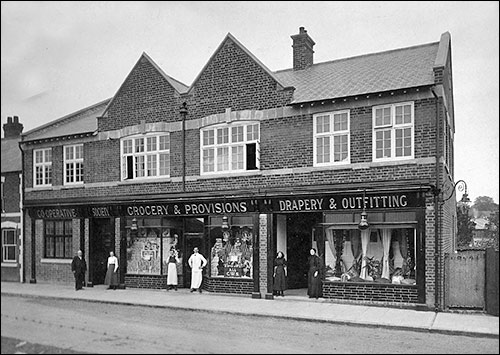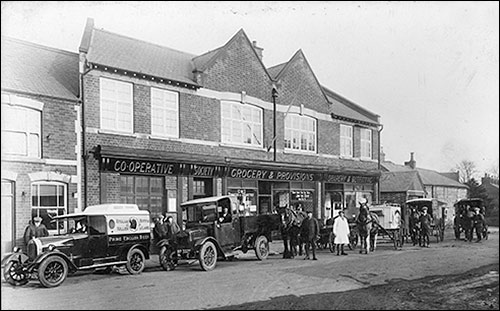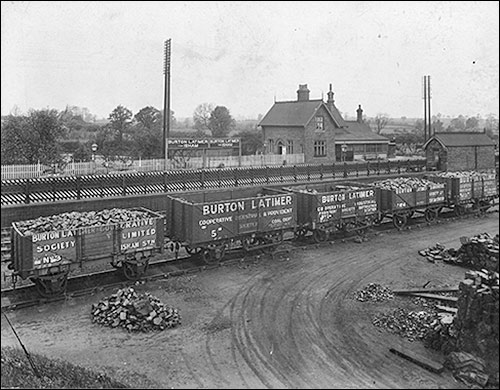 |
|
The new premises, opened in 1913, Charles Stokes is standing extreme left.
|
In 1913, new shops were built in the High Street They consisted of two shops a drapery and a grocery with a cash office on the ground floor, and the main office on the first floor, John Eben Taylor’s house and cobbler’s shop were demolished to make way for this development. Charles Stokes was General Secretary until his death in 1923 and then Mr. Harry Baldwin took over. Also by then, Stephen Mason had become President.
In 1924 a furniture shop was added to the Duke Street premises and a new hall above the High Street shops opened, to be known as the Co-operative Hall.
In 1925, the building of Pioneer Avenue started on land owned by the Co-op. it was built in stages and was not completed until 1930 when the road was finished. All the houses were built with tenders from local builders from the town and surrounding area and were sold through the Co-op. Some of the land was purchased by the Urban District Council for council houses.
In 1929, a new butcher’s shop was built opposite the Central Stores on the corner of the recently built Pioneer Avenue and in 1931 Mr. Albert. A. Grove became General Secretary.
|
|
|
Co-operative Society coal wagons at Burton Latimer station in the 1930s
|
To cater for its coal department, the Society rented a siding at Burton Latimer station and purchased five second-hand coal trucks which were used to collect coal from Gedling and Swanwick collieries to be delivered around the town.
In the mid 1930s Charles Loveday’s saddlers shop and two cottages were demolished and an extension was built to the left of the High Street shops and this became the drapery shop which was opened on Saturday February 29th 1936. Towards the end of the 1930s the Duke Street furniture shop was closed.
 |
|
Co-op delivery vehicles in 1926. On the left is Charles Loveday's
saddlers shop, demolished to make way for the store extension in 1935.
|
|


